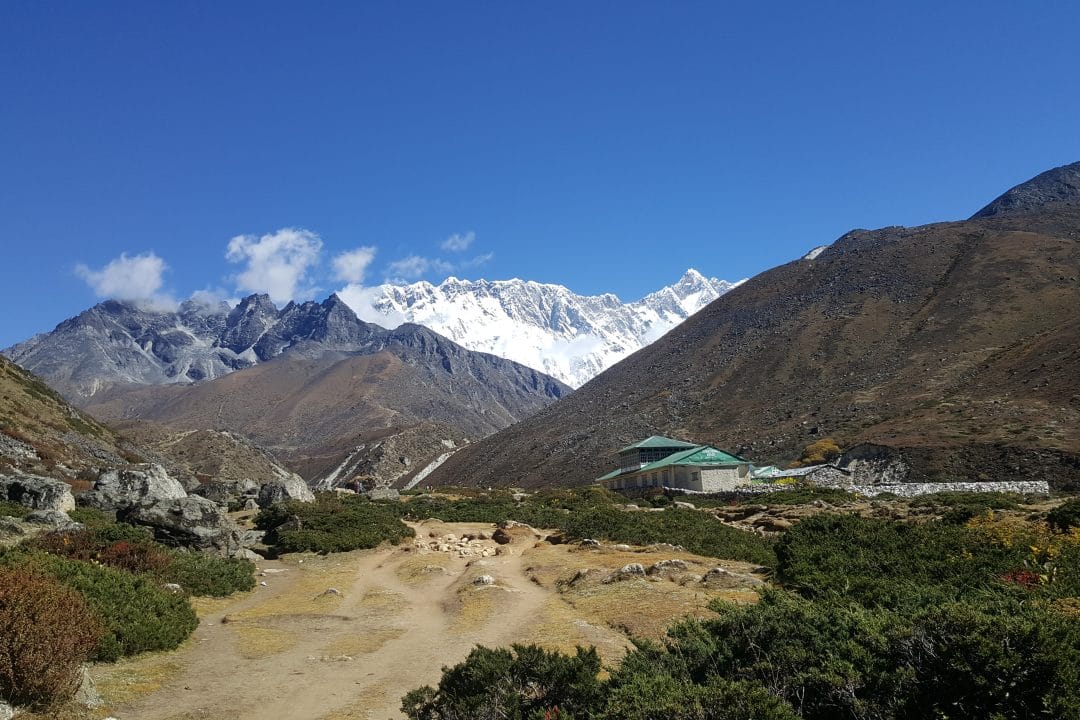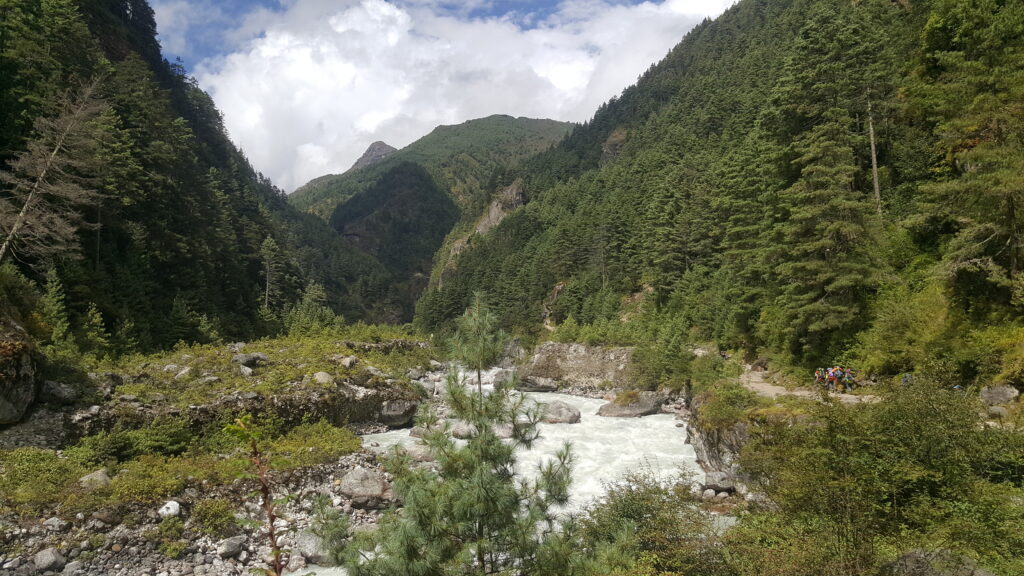Sagarmatha National Park In Nepal

Sagarmatha National Park in Nepal is one of the UNESCO natural world heritage sites which was enlisted in 1976. It covers an area of 1148 sq. km. Furthermore, in 2002, a buffer zone of 275 sq. km was added. It is also the home of mountains. Mount Everest – the highest peak in the world lies in the Sagarmatha region. In 2007, Gokyo Lake inside the Sagarmatha National Park was listed as a Ramsar Site.
The Sagarmatha National Park covers the world’s first, fourth, and sixth-highest peaks namely Mt Everest (8,848.56m), Mt Lhotse (8,516m), and Mt Cho-Oyu(8188m) respectively. Additionally, numerous mountain peaks which are above 6000 meters are included in this area. The high-altitude lakes, Himalayan glaciers, deep valleys, rugged trains,s, and mesmerizing waterfalls added extravagant beauty to this park.
Table of Contents
Location
Sagarmatha National Park ranges from an elevation of 2,845m to the highest peak. It is adjacent to Makalu Barun National Park to the eastern part and Rolwaling Valley of the Gaurishanker conservation area to the western side. Moreover, the Qomolangma National Preserve of Tibet is adjoined to the northern part and the Sagarmatha National Park buffer zone area lies to the southern part.
Climate
Various climatic temperatures can be experienced in Sagarmatha National Park as it has an ideal altitudinal range and several Himalayan landscapes. The climate becomes cold and dry at maximum elevations and remains a humid subtropical climate in the lower elevations.
During the month of summer (June – August), heavy rainfall is experienced in the lower altitudes. However, at the month of winter (December – February) the temperature drops down below the freezing point and remains cold and dry. On the other hand, the temperature still is like of winter season consisting of some rays of sunlight during the month of the spring season (March-May). Similarly, in the autumn season (September- November) the sky remains empty, and the sun disappears quickly.
Note: Due to various changes in the climatic temperature, the best time to visit the Sagarmatha National Park is in the months of October to November and from March to May.
Wildlife and Vegetation

The park covers a forest zone of up to 4000m where we can find several species of trees, flora, and fauna. Blue pines, firs, bamboo, rhododendrons, birch, and juniper can be seen all over the forest during the visit. In comparison with another national parks, there are limited flora and fauna found in Sagarmatha National Park. As you ascend up (up to 6,000 m), you will get a chance to see only a limited number of plants, dwarf shrubs, and cushion plants like mosses, and grassland. Moreover, there is no vegetation above the elevation of 6000m.
Almost 118 species of birds including the Impeyan Pheasant, crimson head pheasant, animals such as musk dear, Himalayan wolves, Himalayan black bear, and the rare Himalayan species like the Red Panda, the snow leopard are found in the Sagarmatha National Park.
Local People at Buffer Zone
Local Sherpa people reside in the Sagarmatha National Park area. Most of the people follow the Tibetan culture and are of Tibetan origin. Villages such as Namche Bazar, Khumjung, Thyangboche, Pangboche, and Kunde are popular places where Sherpa lives. There are almost 20 village settlements in this area and around 6000 people live here. People do farming and agriculture for their livelihood. Furthermore, they depend upon tourism as well.
Things to Do and Place to Visit in Sagarmatha National Park
Sagarmatha National Park covers the world-famous trekking route which leads to the highest mountain peak- Mt Everest. Besides Everest, the main activity in Sagarmatha National Park is the trek to Everest Base camp. Thousand of trekkers and visitors the area to gather lifetime experience and recollect beautiful memories. Mountaineering is another main activity that visitors often do. The mesmerizing view of majestic mountain peaks such as Ama Dablam, Cho Oyu, Pumori, and Thamserku can be seen easily from the Everest Base camp.
Moreover, visitors can do a helicopter tour of Everest Base Camp to see panoramic views of the mountains precisely.
Likewise, the visitors may extend their time to visit the several monasteries and lakes of Sagarmatha National Park. Tengboche, Khumjung, Pangboche, and Thame are some popular places for Monasteries visit. People mostly gather in such monasteries during important festivals like Mane, Dumje, Rumdu, etc.
Gokyo Lakes is another tourist place located in the Sagarmatha National Park. The lakes consist of six lakes. The Thonak lake is the largest lake among them.
Entrance Fees:
| Nepali | NPR 100 Per Person |
| SAARC Nationals | NPR 1500 Per Person |
| Foreigners | NPR 3000 Per Person |
| Child Discount | Below 10 Years Free |
List Of 8 Best Trekking in Sagarmatha National Park
Are you looking for an adventure trip around Sagarmatha National Park (Everest Region)? let’s visit the below trip
- Everest Base Camp Trek– 14 Days
- Everest Short Trek– 8 Days
- Everest Three High Passes Trek– 19 Days
- Island Peak Climbing– 19 Days
- Gokyo Valley Trek– 13 Days
- Everest Base Camp Heli Trek– 11 Days
- Everest Base Camp Helicopter Tour-1 Day
- Everest Base Camp Gokyo Trek Via Cho-la Pass– 17 Days









